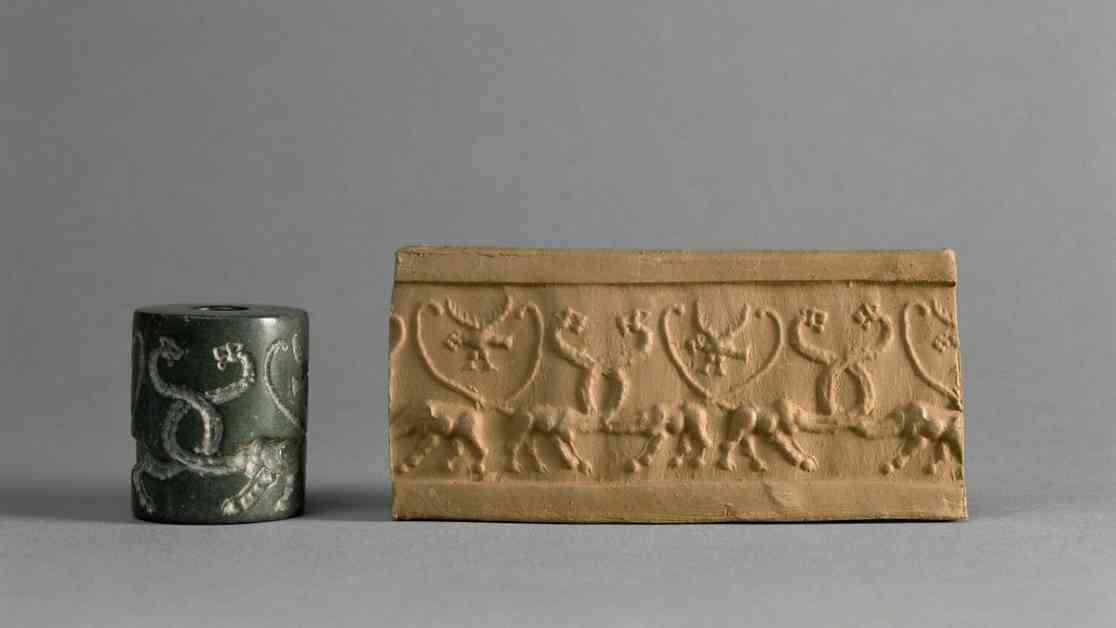The world’s oldest writing system may have originated from symbols used for trade on stone cylinder seals, a recent study suggests. These seals were used in Mesopotamia for exchanging farming produce and textiles, and researchers believe that some of the symbols engraved on these seals evolved into the proto-cuneiform script, an early form of writing.
The study, published in the journal Antiquity, focused on symbols found on cylinder seals dating back to about 4400 B.C., over 1,000 years before the development of writing. Researchers from the University of Bologna identified motifs related to the transport of goods between Mesopotamian cities, which they believe later became signs in early writings about trade. This discovery shows a direct link between preliterate symbols on seals and the development of writing in southern Iraq.
Cuneiform writing, developed around 3100 B.C. in Mesopotamia, used wedge-shaped impressions made by a stylus on clay tablets to represent sounds and record spoken language. The Sumerians, who lived in southern Mesopotamia, developed this writing system, and it was later adopted by the Akkadians, becoming the common written language of the region for over 2,000 years.
The study’s authors hope that their work will help decode more proto-cuneiform symbols and provide insights into the meanings of seal motifs. They believe that the transition from pre-writing symbolism to writing was a significant development in human cognitive technologies, marking the shift from prehistory to history.
While some experts find the study interesting and thought-provoking, others caution that it may be premature to suggest a direct causal relationship between symbols on cylinder seals and the invention of writing. However, the research verifies the idea that imagery on seals influenced early writing, bridging the gap between prehistory and history.
Overall, this study sheds light on the origins of writing and how symbols used for trade on cylinder seals may have played a crucial role in the development of the earliest writing system. It highlights the importance of studying ancient artifacts to understand the evolution of human communication and cognitive technologies.










